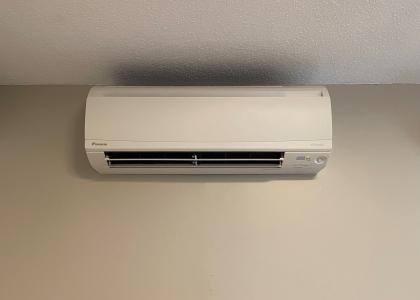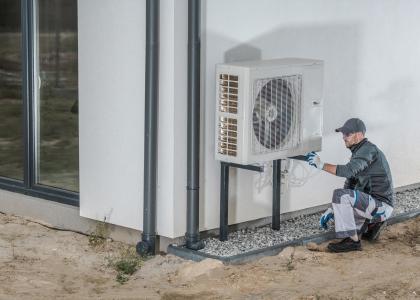Obama Legacy on Appliance Standards Exceeds All Previous Presidents; What Will Next Administration Do? Potential Carbon Pollution Cuts Equal by 2050 to Closing 60 Coal-Fired Power Plants.
Washington, DC—In the wake of a historic number of energy-efficiency standards completed during the Obama Administration, the next occupant of the White House could preside over updates to existing US appliance, equipment, and lighting efficiency standards that by 2050 would cut climate emissions by the annual equivalent of 60 coal-fired power plants and lower consumer utility bills by $65 billion a year, according to a new study released today by the Appliance Standards Awareness Project (ASAP) and the American Council for an Energy-Efficient Economy (ACEEE).
Entitled “Next Generation Standards: How the National Energy Efficiency Standards Program Can Continue to Drive Energy, Economic, and Environmental Benefits,” the new ASAP and ACEEE study is available online at http://aceee.org/research-report/a1604.
To date, the Obama Administration has completed a total of 45 appliance, equipment, and lighting efficiency standards, more than all other US presidents combined since the bipartisan enactment of the National Appliance Energy Conservation Act of 1987. That national appliance standards law requires the US Department of Energy to review each standard at least once every six years to determine if an update is warranted and, if so, to complete that update within the ensuing two years.
Based on estimates for 45 of the roughly 55 products currently included in the national standards program, the ASAP and ACEEE analysis looks at what could happen in the next eight years, assuming future standard updates will be based on currently existing technology and completed and take effect on the latest date allowable under the law. Appliance standards fell behind schedule for a time in the 1990s and 2000s, which is one reason why the focus and resolve of the next Administration is so important.
The study concludes that “efficiency standards updated within the next eight years have the potential to reap very large energy and consumer bill savings. The next administration could achieve cumulative nationwide savings of 70 quadrillion Btus (quads) of energy and 3.5 billion metric tons of carbon dioxide (CO2) by 2050 while cutting consumer and business utility bills by $1.1 trillion. Even greater savings may be achieved by investing in improved test procedures, systematically assessing opportunities for expanding the scope of national standards, improving analysis techniques and data sources, assessing opportunities for standards to contribute to systems-level savings, and taking connectedness into account.”
On an annual basis, that works out to 335 billion kilowatt hours in electricity savings, 200 million metric tons of carbon dioxide pollution cuts, and $65 billion in lower utility bills in 2050. Additionally, 850 billion gallons of water—roughly equal to what Texas households use in a year— would be saved.
Andrew deLaski, executive director, ASAP, said: “These truly enormous savings, which are even larger than we expected to find, show that the next President of the United States can draw on a well of efficiency savings that is much deeper than once thought. And there is more good news here: A continuation of the Obama administration focus on appliance standards combined with further technological advances could reap even bigger benefits for both consumers and the environment.”
Lowell Ungar, senior policy advisor, ACEEE, said: “Appliance standards are the Olympics of energy efficiency policy. This report shows that, thanks to continued innovation in appliances and equipment, we can still raise the bar for higher consumer bill savings and run faster toward clean air.”
Mel Hall-Crawford, energy projects director, Consumer Federation of America, said: “Given the tremendous success of energy efficiency standards, which already are saving consumers approximately $63 billion per year, this forward-looking report is a timely and well-thought-out roadmap for the next administration to continue on the path to providing even greater energy savings for the country.”
Joanna Mauer, technical advocacy manager, ASAP, said: “Our report shows that continued technology advancements are unlocking large savings opportunities, including for products that have already seen significant efficiency gains. The potential for new standards to keep on delivering big energy, water, and bill savings benefits is as great as ever. Our analysis shows that the next president could match or even top the impressive savings achieved during the Obama Administration.”
Other key report findings include the following:
- Potential annual energy savings in 2035 equal the current annual energy consumption of all the homes in Texas and Ohio combined. Potential savings in 2050 grow to cover current consumption of homes in those states plus New York and South Carolina.
- Just 10 products account for more than 70 percent of cumulative energy and utility bill savings potential. The most impactful potential standards are for: water heaters; central air conditioners/heat pumps; showerheads; clothes dryers; fans; electric motors; refrigerators/freezers; faucets; distribution transformers; and compressors.
Taking into account standards enacted by law and those set by DOE, the Obama administration has completed 18 more standards than any prior administration. Accounting only for standards set by DOE rulemaking, the Obama administration has completed seven times more standards than any previous administration. Standards already completed during the Obama administration will cumulatively save 44 quads of energy and save consumers and businesses $540 billion on their utility bills through 2030. These savings far exceed the savings from standards adopted administratively under any prior president. Standards expected to be completed between June 2016 and January 2017 will add to these totals.
The updates to existing standards over the next eight years would come on top of the long-term benefits from the underlying standards themselves. According to DOE, existing efficiency standards completed through February 2016 will, on a cumulative basis from 1987 to 2030, reduce the need for 132 quads of energy, save consumers nearly $2 trillion on their utility bills, and reduce CO2 emissions by more than 7 billion metric tons. For comparison, the entire US economy uses about 100 quads of energy per year.
ABOUT THE GROUPS
ASAP (http://www.appliance-standards.org) organizes and leads a broad-based coalition effort that works to advance, win, and defend new appliance, equipment, and lighting standards which deliver large energy and water savings, monetary savings, and environmental benefits. Working together, the ASAP coalition supports new and updated standards at the national and state levels through technical and policy advocacy and through outreach and education. ASAP was founded in 1999 by the American Council for an Energy-Efficient Economy, the Alliance to Save Energy, the Energy Foundation, and Natural Resources Defense Council.
The American Council for an Energy-Efficient Economy acts as a catalyst to advance energy efficiency policies, programs, technologies, investments, and behaviors. For information about ACEEE and its programs, publications, and conferences, visit http://aceee.org.
MEDIA CONTACT: Patrick Mitchell, (703) 276-3266 or pmitchell@hastingsgroup.com.
EDITOR’S NOTE: A streaming audio recording of this news event will be available online as of 5 p.m. EDT on August 4, 2016 at www.appliance-standards.org/content/next-gen-report-audio.
The American Council for an Energy-Efficient Economy acts as a catalyst to advance energy efficiency policies, programs, technologies, investments, and behaviors.



